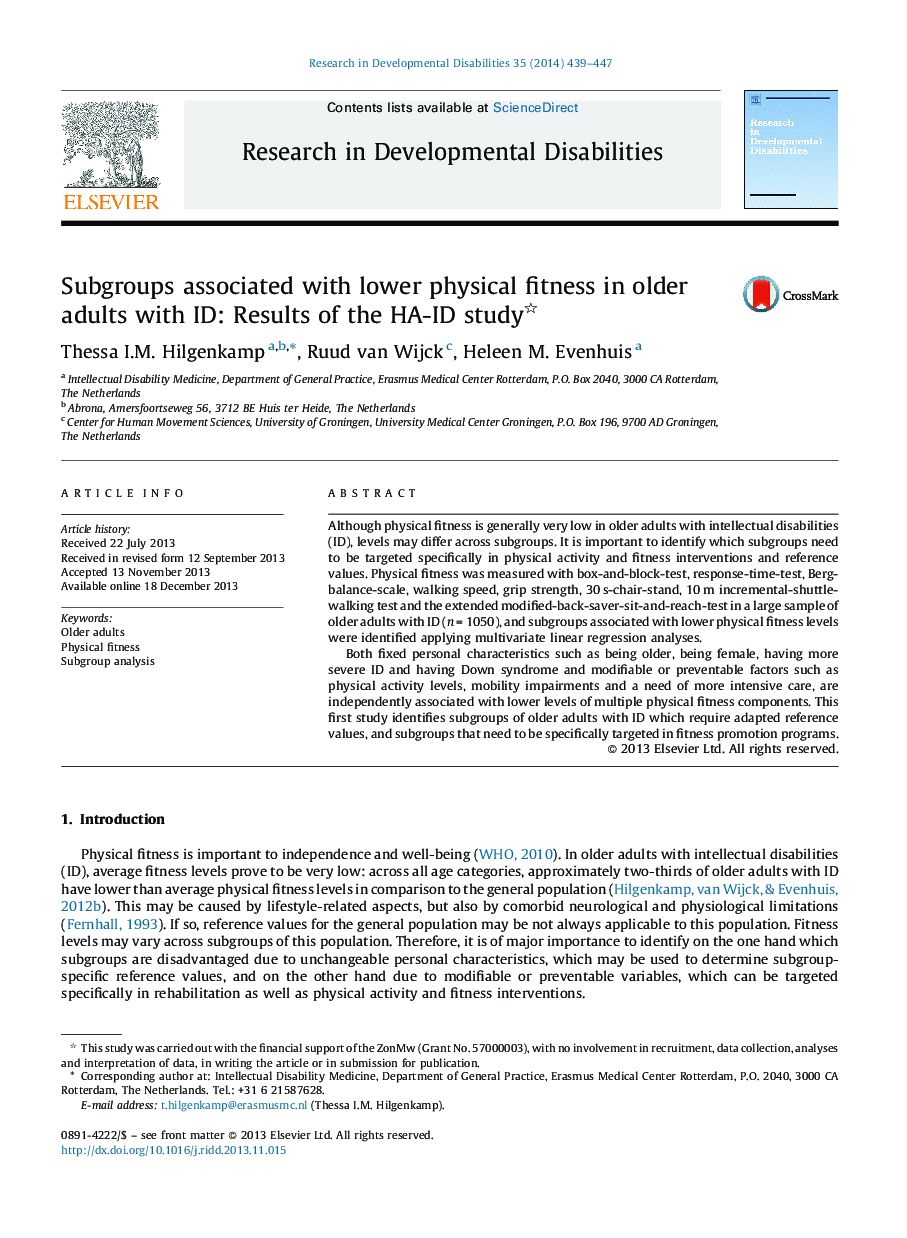| Article ID | Journal | Published Year | Pages | File Type |
|---|---|---|---|---|
| 371427 | Research in Developmental Disabilities | 2014 | 9 Pages |
•Low physical fitness levels are seen across the entire older ID population.•Older, female adults with more severe ID or Down syndrome are less fit.•Less active adults with mobility impairments and higher care needs are less fit.•Exercise interventions should target subgroups with lowest fitness levels first.
Although physical fitness is generally very low in older adults with intellectual disabilities (ID), levels may differ across subgroups. It is important to identify which subgroups need to be targeted specifically in physical activity and fitness interventions and reference values. Physical fitness was measured with box-and-block-test, response-time-test, Berg-balance-scale, walking speed, grip strength, 30 s-chair-stand, 10 m incremental-shuttle-walking test and the extended modified-back-saver-sit-and-reach-test in a large sample of older adults with ID (n = 1050), and subgroups associated with lower physical fitness levels were identified applying multivariate linear regression analyses.Both fixed personal characteristics such as being older, being female, having more severe ID and having Down syndrome and modifiable or preventable factors such as physical activity levels, mobility impairments and a need of more intensive care, are independently associated with lower levels of multiple physical fitness components. This first study identifies subgroups of older adults with ID which require adapted reference values, and subgroups that need to be specifically targeted in fitness promotion programs.
